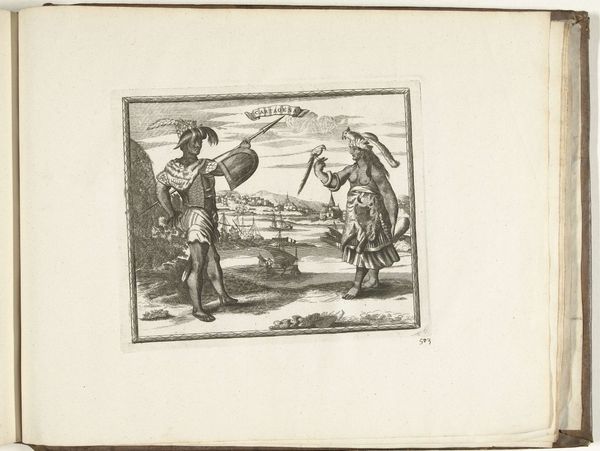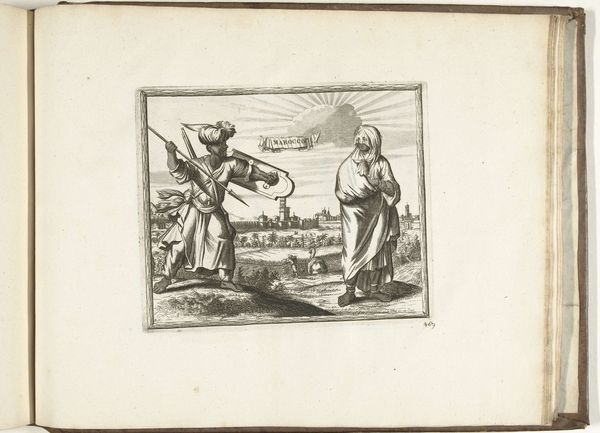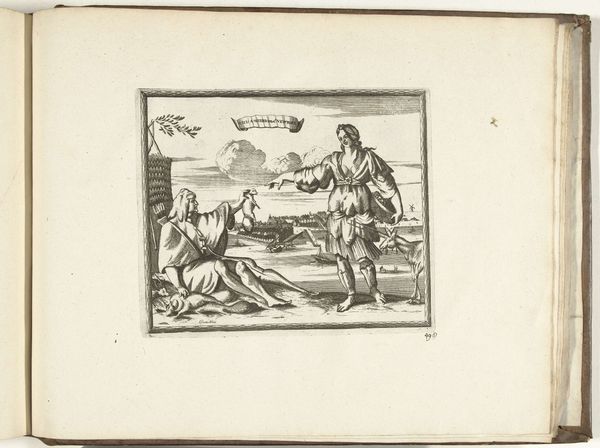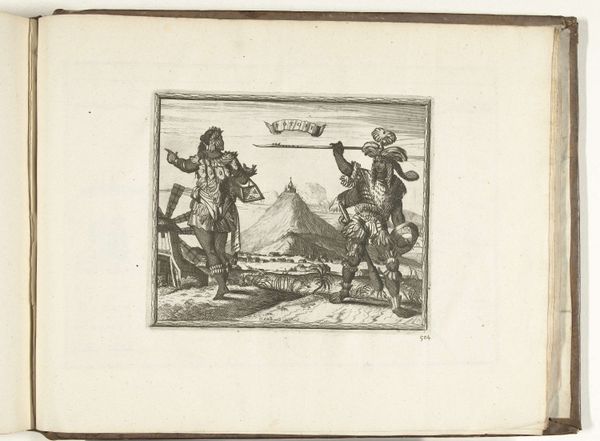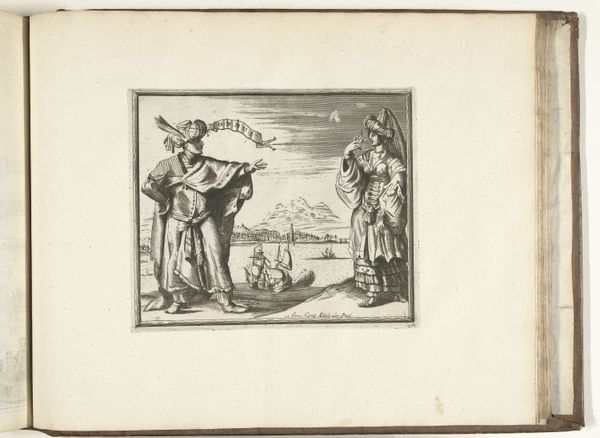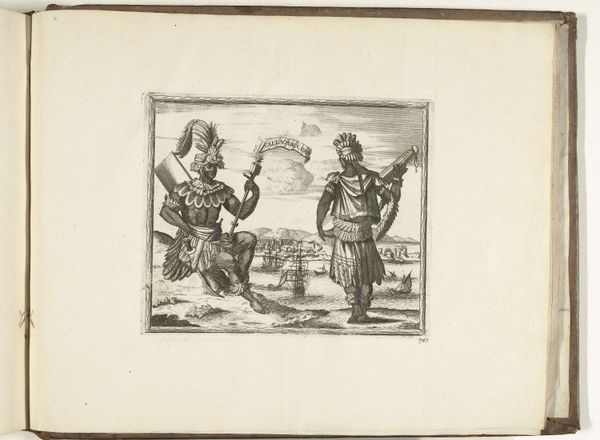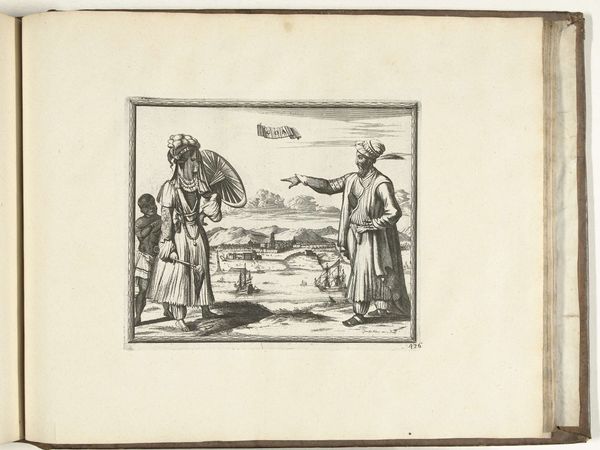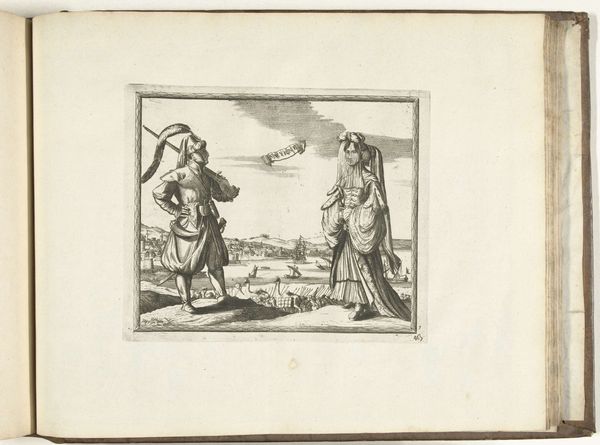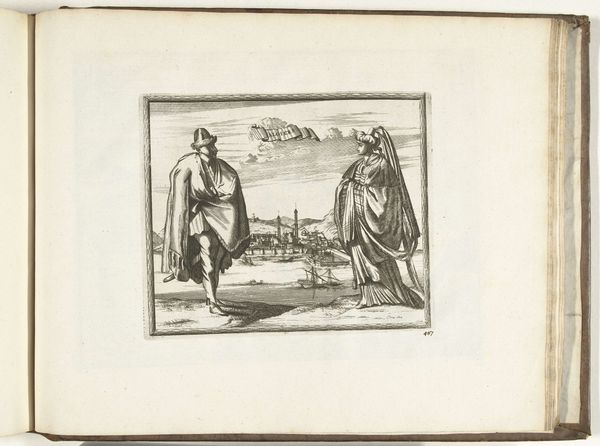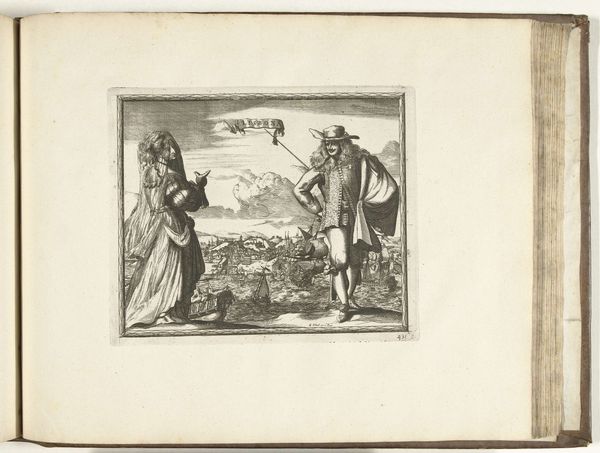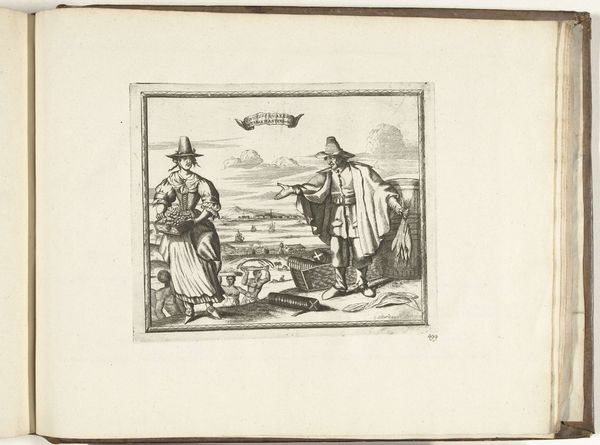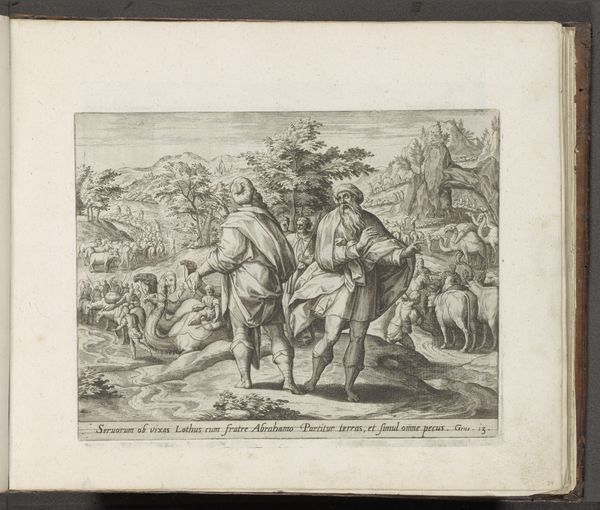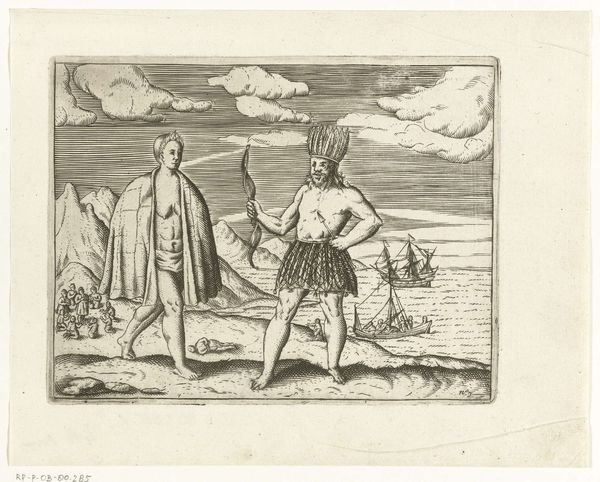
print, engraving
#
portrait
# print
#
engraving
Dimensions: height 175 mm, width 208 mm
Copyright: Rijks Museum: Open Domain
Curator: Immediately striking! The figures, stark against what seems to be Campeche in the background, emanate a stillness despite the implied context of colonial encounter. Editor: Exactly! Here we have "Inwoners van Campeche, 1726," an engraving by Carel Allard now housed at the Rijksmuseum. Look at the crisp lines achieved through the printmaking process, and consider its function as a form of early ethnographic documentation, showcasing the perceived inhabitants of this distant land. Curator: Indeed. The detail suggests considerable labor, doesn’t it? Each line meticulously etched to create these visual textures – the armor of one figure, the cloak of the other. And how these material depictions shape our understanding of power. The materials signify status, craft, and the control of resources, I'd argue. Editor: Agreed. This is a vital visual record, albeit filtered through a colonial lens. These images circulated within specific European audiences, shaping perceptions of indigenous populations in the Americas. The individuals portrayed here were far from static entities, frozen in time; they possessed agency, resistance, and complex cultural identities constantly in negotiation. What stories of exploitation are implied by their very stances, right? Curator: Precisely. Notice how their garments, likely derived from local materials and craftsmanship, become objects of study and consumption within the frame of European artistic practice? What were the economic realities tied to representing them? How would a locally produced item relate in value to one fabricated elsewhere? Editor: I think there is so much intersection here. Gender also needs a highlight: Where are the women in this representation? Are the bodies being objectified, sexualized? How are ideas about racial purity and otherness encoded through posture and gaze? Curator: A telling omission, absolutely, to the power imbalances at play. And yet, we see resistance even in quiet ways –the upright posture, the clear expressions. The image prompts questions, really about colonial representations and the politics of display. Editor: It truly underscores how every object is laden with potential stories and, perhaps, unintended silences that ask further inquiry. Curator: Well said! A lot to continue digging into in the museum's catalogue.
Comments
No comments
Be the first to comment and join the conversation on the ultimate creative platform.
